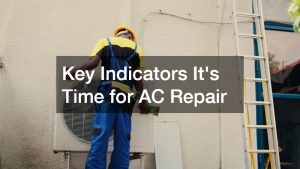Education is an essential aspect of life. It is one of those non-negotiable elements that every parent must take responsibility for with their children. At times, they might even have to force kids to go to school. Whenever we talk about education, the classroom is often the most talked-about aspect of it. Every teacher and student interaction happens inside that environment, making it a crucial component that defines education.
However, the classroom setup has limitations, and the pandemic forced much-needed changes to ensure that younger generations can learn. Social distancing protocols made classrooms ineffective for learning, at least until the virus still poses a threat. Fortunately, technology paved the way for the future of education. Here are a few changes that we’ve experienced and one that shows promise for how we define education.
Online Collaboration Apps and Sites
Classrooms are where teachers provide educational lessons through a whiteboard presentation. Note-taking is a critical part of learning where students take out their pens and notebooks to scribble whatever the instructor writes or says inside the classroom. It is an effective strategy because it keeps the body and minds active, engaged, and void of distractions. However, there is one flaw to note-taking.
Most classes end up being more than an hour-long session, especially when a student is in tertiary education. When coupled with plenty of units within a day, note-taking can be a tiring task. The hand will hurt. Unfortunately, that means that subjects requiring calm and rested hands could suffer, like doctorate degrees and architecture. People need to rest their hands when taking notes, making it necessary for students to find alternatives. Fortunately, technology provided the solution.
Online apps and sites took away note-taking and made way for typing, with students jotting down lessons without exerting too much effort on their hands. Those online tools also improved collaboration. Students can share notes online, ensuring that everyone can keep up with the lessons they missed.
Seamless Access to Educational Resources
One of the most annoying things in education is the need for students to carry a heavy stack of textbooks for multiple classes. Locker rooms provide a storage solution, but what if kids had to take home every book to work on their assignments? That situation might seem like a minor issue, but technology is all about making lives easier. As a result, educational resources are now available online.
This advancement is beyond removing textbooks from a kid’s bag. Technology opened the gateway for education beyond the confinements of a classroom and the teacher. If they have particular interests beyond the lesson for the day, students can now perform research on academic-grade materials on the internet. Teachers even encourage them to learn as much as they can beyond the given syllabus. The seamless access to educational resources allows students to develop and understand better, provided they commit themselves to further education.

Online Classes
The classroom setup is the most effective learning environment for students. However, it became unachievable due to the complications brought forth by the Covid-19 pandemic. Putting students from different homes in one public room is a sure way to spread infection. To avoid endangering lives, academic institutions had to prohibit face-to-face learning in classrooms. However, they still have commitments and responsibilities to students, especially when it is the middle of the semester.
Education suffered for a while, but academic institutions managed to utilize technology in their most desperate moment. Students can interact with teachers virtually through online classes. While it might have its limitations, an online classroom provides the necessary elements where education thrives. Instructors can utilize digital tools like PowerPoint presentations and audio-visual materials, both essential resources for learning. The only struggle would be internet issues, especially when there are too many students. Considering we are in a global crisis, the transition from classrooms to digital conferences is a massive step forward.
Specialized Simulation and Models
Online classes are a desperate attempt to replace the classroom setup amid the widespread pandemic. However, the improvements made amid the global crisis made it a viable replacement. Academic institutions now realize the benefits of digital upgrades in education, creating a promising path for more innovations. Among the many routes, virtual reality has the best potential. Creating digital simulations and models of education resources can create an environment that copies a child’s imagination. Through extended reality for education, students can take everything seen from textbooks and come face-to-face with them in a simulation. If kids want to know the exact measurement and anatomy of the pre-historic Tyronnasaurus Rex, they can interact with it with no consequences. Virtual reality can make education more engaging than note-taking and textbooks can provide, making it the next step of education.
The world needed to change amid the pandemic, and technological advancements are the key to making them. In education, effective learning transitioned to online classes, but it is only the first step in what seems to be a future filled with innovation.
















